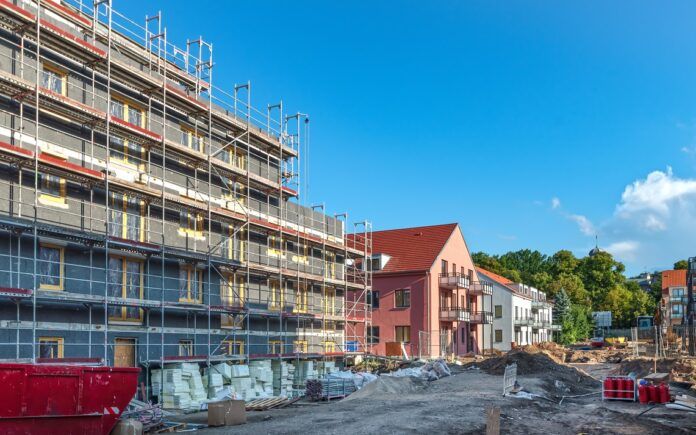The Competition and Markets Authority (CMA) has suggested a “substantial intervention” in the housebuilding market after reporting that the complex and unpredictable planning system, together with the limitations of speculative private development, is responsible for the persistent under delivery of new homes.
The CMA reported that there was less than 250,000 homes built last year across Great Britain – well below the 300,000-target for England alone.
This intervention would include a significant increase in non-speculative house building that has previously been led by local councils and housing associations.
The study the CMA conducted also found concerns about estate management charges, with homeowners often facing high and unclear charges for the management of facilities, as well as sensitive information sharing among housebuilders.
Concerns have also been raised with the quality of some new housing after the number of owners reporting snagging issues increased over the last 10 years.
Planning rules
The planning systems in England, Scotland and Wales are producing unpredictable results and often take a protracted amount of time for builders to navigate before construction can start.
The report highlights that many planning departments are under resourced, some do not have up to date local plans, and don’t have clear targets or strong incentives to deliver the numbers of homes needed in their area. They are also required to consult with a wide range of statutory stakeholders, which often hold up projects by submitting holding responses or late feedback to consultations on proposed developments.
Land banks
The CMA assessed over a million plots of land held by housebuilders and found the practice of banking land was more a symptom of the issues identified with the complex planning system and speculative private development, rather than it being a primary reason for the shortage of new homes.
Private estate management
The CMA found a growing trend by developers to build estates with privately managed public amenities – with 80% of new homes sold by the eleven biggest builders in 2021 to 2022 subject to estate management charges. These charges are often high and unclear to homeowners.
Whilst the average charge was £350 one-off, unplanned charges for significant repair work can cost thousands of pounds and cause considerable stress to homeowners. The report highlights concerns that many homeowners are unable to switch estate management providers, receive inadequate information upfront, have to deal with shoddy work or unsatisfactory maintenance, and face unclear administration or management charges which can often make up 50% or more of the total bill.
Information sharing
The CMA has also found evidence that some housebuilders may be sharing commercially sensitive information with their competitors, which could be influencing the build-out of sites and the prices of new homes.
While the CMA does not consider such sharing of information to be one of the main factors in the persistent under-delivery of homes, the organisation is concerned that it may weaken competition in the market.
The CMA has therefore launched an investigation under the Competition Act 1998 into Barratt, Bellway, Berkeley, Bloor Homes, Persimmon, Redrow, Taylor Wimpey, and Vistry. The CMA has not reached any conclusions at this stage as to whether or not competition law has been infringed.
Who’s building what?
According to the report, around two-fifths of the homes built between 2021 to 2022 were delivered by the largest, national housebuilders while more than 50,000 homes were delivered by thousands of smaller, regional builders.
Around 60% of all houses built in 2021 to 2022 were delivered by speculative private development. This way of building homes has given builders flexibility to respond to changes in the market. However, the country’s reliance on this model has seen the gap widen considerably between what the market will deliver and what communities need.
Sarah Cardell, chief executive of the CMA, said: “Housebuilding in Great Britain needs significant intervention so that enough good quality homes are delivered in the places that people need them.
“Our report – which follows a year-long study – is recommending a streamlining of the planning system and increased consumer protections. If implemented, we would expect to see many more homes built each year, helping make homes more affordable. We would also expect to see fewer people paying estate management charges on new estates and the quality of new homes to increase. But even then, further action may be required to deliver the number of homes Great Britain needs in the places it needs them.”
Industry reaction
Commenting on the report, Brian Berry, chief executive of the Federation of Master Builders (FMB), said: “The CMA investigation into the state of housebuilding is right to highlight the planning system as a problem slowing down delivery of new homes. Resources are desperately needed by planning authorities to help small builders through the planning system.
“The CMA findings are a step forward, especially with an acknowledgement that SMEs are disproportionally affected by the planning system. These findings will hopefully give the government renewed impetus to resolve these long-standing issues which the FMB has been highlighting for many years.”
Brian concluded: “It is concerning, however, that the report does not provide enough nuance in such a complex market. The report has a very broad definition of SMEs with very little definition given to the range of house builders within the SME market, such as micro developers, custom house builders and new entrants.
“There are also few international comparisons and where they are included, the findings are fairly tepid, with little realisation for the potential of areas such as custom build, which could be an area of growth for UK builders. In similar countries, such as Germany, they are much further ahead on custom build properties accounting for a much higher percentage of overall housing delivery, which means less reliance on a small group of major housing developers and more diversity of design.”




